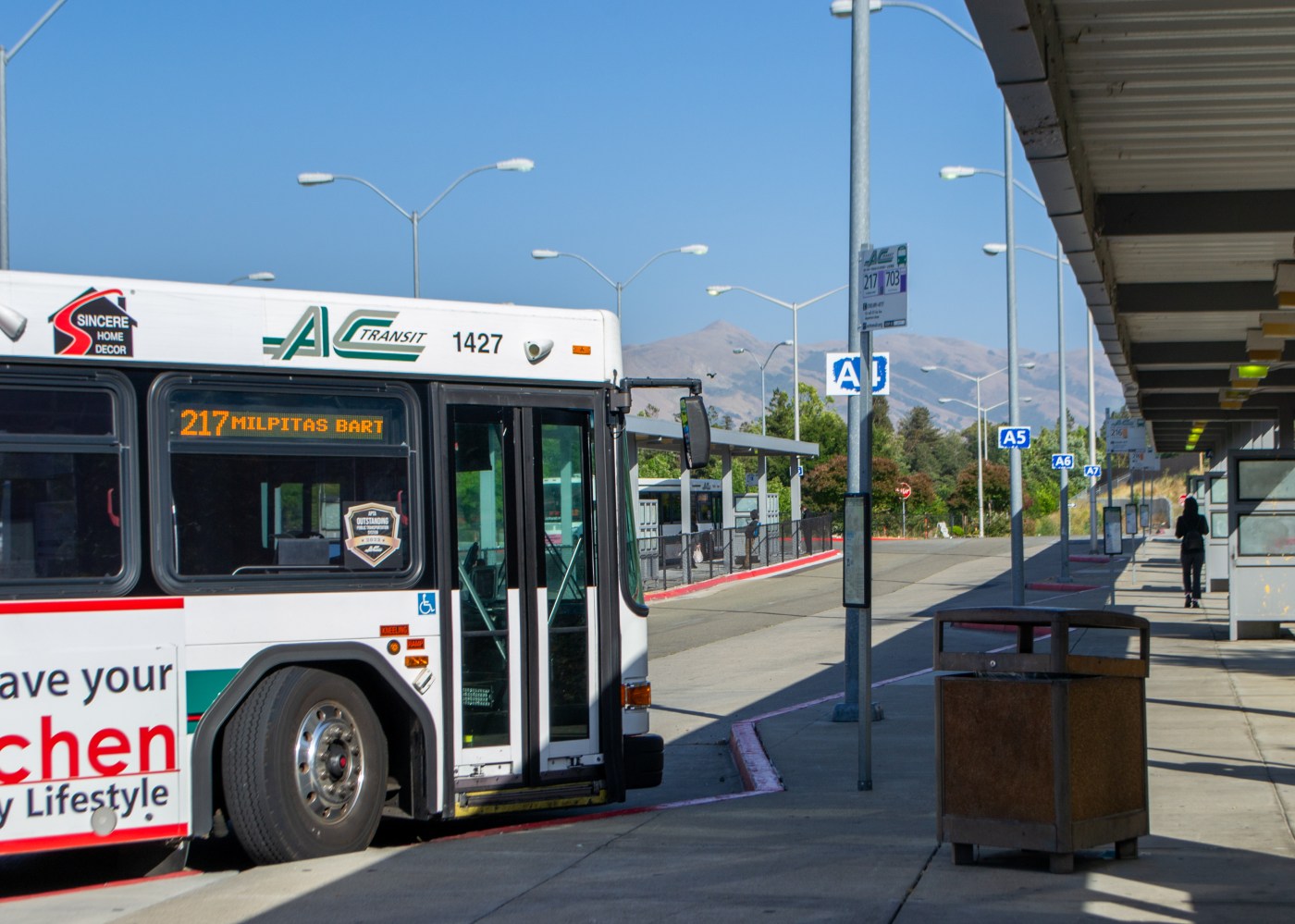
Editor’s Note: This article was written for Mosaic, an independent journalism training program for high school students who report and photograph stories under the guidance of professional journalists.
Every day, hundreds of VTA buses whoosh along the streets of Santa Clara County, carrying almost 90,000 people a day.
Cia Castro Carbajal is well-accustomed to riding the bus — paying the fare, finding a quiet spot in the back and ignoring disruptions and loud conversations. She commutes almost an hour to San Jose State University, where she’s a student, from her home in Santa Clara.
Cia Castro Carbajal of Santa Clara said she was harassed while riding a bus. “I just had to cry at that moment,” she said.
(Padma Balaji/Mosaic)
Carbajal was riding the bus home from school one afternoon when a man slapped her and swore at her. Another young woman, seeing Carbajal being harassed, sat next to her, blocking her from the view of her attacker. “She was so comforting, and I just had to cry at that moment,” Carbajal said.
For many transit users, harassment is an expected part of using public transit. In a 2024 survey conducted by the Santa Clara Valley Transportation Authority, more than two-thirds of riders said they have experienced or witnessed at least one instance of harassment. Women and people of color reported higher rates of experiencing harassment and were more likely to feel unsafe on transit than their white, male counterparts.
However, harassment is rarely reported — in the same survey, the VTA said that only a quarter of riders who experience or witness harassment report it.
Even just the fear of harassment can be damaging.
“The idea that something could happen, even if it doesn’t happen, that fear does have an impact,” Haleema Bharoocha, a transit safety advocate, said. “Folks are kind of walking around with this psychological lack of safety, even if it hasn’t happened to them personally.”
Carbajal knows that only too well.
“For a while I was afraid of taking the bus, but I still had to take it, so I just had to swallow my fear and just get on the bus anyway,” she said.
Bharoocha, who served as the senior advocacy manager of the Oakland nonprofit Alliance for Girls, published a report in 2019 about girls’ experience with harassment. It found that 100% of 60 girls who participated in focus sessions had experienced harassment while taking public transit daily.
The following year, the Alliance for Girls and BART partnered to launch a campaign against sexual harassment called Not One More Girl.
“We knew right away that the starting place to do this initiative would be to speak with young women of color and to have them serve as spokespeople for this initiative,” said Alicia Trost, chief communications officer for BART and a campaign leader.
More than 500 girls worked on the campaign, sharing their experiences and leading social media strategy and design.
Trost said BART was the first transit agency in the Bay Area to lead a campaign that focused on community voices.
Related Articles
Why aren’t more Latinos, Blacks taking high school AP courses?
The Filipino legacy of Pinoytown in San Jose
Opinion: Dear Hollywood, stop with the sequels already
Cuts to science grants force San Jose researchers, student to scramble
Making hoops affordable: Don’t let the duct-taped jerseys fool you
“I had seen other transit agencies launch harassment campaigns, and a lot of times they either used the wrong language or put all of the onus on the victim to stay away from the bad guys, and there was backlash against the campaign,” Trost said.
Instead, BART implemented feedback from the community. Hearing that youth often felt unsafe in empty cars and found safety in numbers, BART shortened the length of their trains. They also displayed QR codes to Spotify playlists curated by youth, because young people who were part of the focus groups said knowing BART cared enough to build a playlist for them made them feel safer.
After the campaign ended in 2023, a survey found that 65% of people felt more aware of the issue. By the end of the campaign, data from a quarterly survey showed harassment decreasing, from 12% of people who responded in 2020 to 10% of people who responded in 2023.
So far, BART is the only Bay Area transit agency to implement a sexual harassment campaign driven entirely by the voices of young women of color.
As ridership lags across all public transit, there’s renewed interest in focusing on safety and addressing harassment issues.
“It’s really important for the future of our success and to maintain our level of ridership and to gain new riders that we tackle this,” Trost said. BART’s ridership levels have only returned to 55% of pre-pandemic levels. “We know that people who experience harassment may avoid BART afterward. They’re not going to go and tell their friends to ride BART, so it’s a reputational risk for us. It’s a safety risk for us. It’s a financial risk for us.”
Padma Balaji is a member of the class of 2026 at Mission San Jose High School in Fremont.